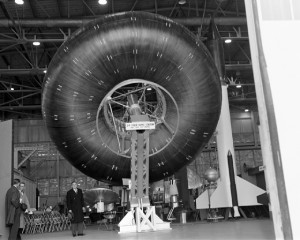
By Tony E. Schoenfelder
How many of us have worked in organizations where the discipline was so rigid and unyielding that it would send even a Marine Corps Drill Instructor screaming into the night? How many of us have worked in organizations where sightings of senior management were sporadic and rare, and any other interactions were by appointment only? Or, how many of us have worked in organizations where your role, absent specific direction, was to be seldom seen and rarely heard? And how many of us have worked in organizations where seemingly light itself was not permitted to escape without the acquiescence and approval of the director? Sadly, there are organizations that embody some of these conditions, and the resultant adverse effects on employee productivity, creativity and morale are profound.
But what if you could work in an organization in which there was little hierarchy, where rank and seniority played no part, where there were no closed meetings or doors, where everyone knows what was expected of them, and where creativity was not only tolerated but encouraged and celebrated? Was there ever such a place? There was, and it was known as NASA’s Space Station Task Force. I was fortunate enough to work there for a time, and I would like to tell you how this organization with few apparent rules led to incredibly high levels of employee satisfaction and fulfillment, and yielded work products of enduring quality.
On May 20, 1982, NASA Administrator James M. Beggs established the Space Station Task Force under the direction of John D. Hodge. The Task Force was charged with the responsibility for “the development of the programmatic aspects of a Space Station as they evolve, including mission analysis, requirements definition and program management,” and was authorized to draw on Space Station activities at the NASA Program Offices and Field Centers. No additional conditions or directions were provided.

An early model (circa 1961) of an inflatable space station concept, 24 feet in diameter with an internal fabric bulkhead that could be separately pressurized in an emergency.
Hodge knew that in order to accomplish the job he had been given, he was going to have to obtain the services of the “best and the brightest” and facilitate the unleashing of the full force of their creative capabilities. In order to avoid the stultifying effects of a typical hierarchical organization, he set up a loosely structured, horizontal organization with only one supervisor of record — himself. He populated this organization with detailees from Headquarters, the field Centers and the Jet Propulsion Lab, thereby assuring himself of the political and technical expertise with which to deal with Congress and the bureaucracy, and conduct the required engineering studies and analyses. The decision to use detailees was an important one, as it enabled the best talent available to sign on to the Task Force for up to a year while still retaining rights to their permanent positions.
There were so many tasks and so few people to accomplish them that almost everyone was in charge of something. Members had multiple assignments, served in several different working groups, and in general knew what everyone else was doing. The absence of any kind of organizational turf to defend allowed the members to participate fully with one another toward achieving a common goal, thus engendering a strong sense of ownership in the program. This unity of purpose led to spontaneous offers of assistance to colleagues who were wrestling with particularly difficult problems. It was almost as if the entire Task Force turned out on snowy days to help each other dig out their vehicles. Grade levels or seniority were ignored when pulling together teams to address particular issues. A GS-14 could lead a team comprising any and all grades, including Senior Executive Services (SES). This unselfishness led to the existence of an esprit de corps whereby the vast majority of the members truly cared more about getting the job done than who received the credit.
Hodge combined a number of practices and innovations that led to a unique and uninhibited atmosphere. Each day started at 8:15 AM with an unstructured 15-minute all-hands stand-up meeting. Only those who had something important to say took the floor, while everyone else crowded into the office or hallway to listen. It turned out to be a useful device in that it not only conveyed information, but also physically reunited the team each morning to reinforce the spirit of camaraderie and the sense of shared purpose.
If Hodge had lived in ancient Greece, he would have been one of Aristotle’s peripatetics. He practiced “management by walking around,” and was liable to pop up unannounced anywhere at anytime, but more often after five o’clock in the evening. Once the members learned that he was not engaged in some new form of “gotcha,” these impromptu one-on-one sessions proved very useful. He not only got to know each member as a person, but also received an unfiltered heads-up as to what was going on.
Hodge didn’t believe in secrets. He was completely open with the staff. What he knew, they knew. Members appreciated this unusual candor and reciprocated by keeping him and the leadership well informed. This policy of openness extended to meetings as well. If notice of a meeting appeared on a calendar, it was open to anyone to attend. The exchange of information far outweighed any potential abuse of the privilege, and besides, no one had enough time to become a professional meeting-goer. Hodge also had a unique open-door policy whereby anyone was free to visit with him and discuss any matter of importance. Members were encouraged to take advantage of this opportunity by Hodge’s own mantra of, “Forgiveness, not permission.” Needless to say, rumors didn’t stand a chance in this environment of openness.
Within the Task Force, there was no such thing as a dumb idea. Members were encouraged to speak up without fear of laughter or reprisal, and as soon as everyone learned that even far-out ideas or concepts would be given just and due consideration, brainstorming sessions became very productive.
Just as important as the uninhibited atmosphere was the manner in which the creative capabilities of the members were unleashed. With so many things to do, the needs of the Task Force soon outstripped the formal skill mixes of the employees then onboard. Hodge recognized that NASA employees tend to become typecast early in their careers, so he gave them the opportunity to work on things entirely new to their experience. A number of people subsequently embarked on entirely new careers as a result. Members were encouraged to take risks, and were assured that failure was an absolutely acceptable consequence. One remarkable innovation that encouraged risk-taking and the demonstration of flexibility and heretofore unknown talents was “Try-a-Job.” New members had the opportunity to work in any or all functions for up to thirty days before having to commit to a single job. This led to an almost unheard-of degree of job satisfaction, with a concomitant impact on results and productivity.
Hodge also practiced a unique form of participative management. He believed that by allowing the members to participate in decisions that directly impacted their jobs, they would tend to support what they helped create. The decision process that resulted could best be described as collegial, although decisions were made by the Director rather than collectively by the members. However, these decisions were preceded by lively and often boisterous debates wherein members could argue their viewpoints, pro or con, without fear of retribution. Hodge retained ultimate control of the process, but the decisions that resulted were “owned” by those who agreed with them and at least understood by those who didn’t. There were no “secret” decisions.
With such an open, informal and unstructured organization of such disparate talents, there had to be some unifying force to focus the members’ energies. It turned out that they all shared the dream or vision of a permanently manned presence in space. Everything they did was geared toward realizing that goal, and the unique opportunities offered by the Task Force served as very powerful motivators.
The Space Station Task Force accomplished many things during its two-year life, the most important of which led to the announcement during the State of the Union Address on January 25, 1984: “Tonight, I am directing NASA to develop a permanently manned Space Station and to do it within a decade.” But the most enduring legacy of the Task Force may lie within the hearts and memories of those who served as members. It is simply that almost everyone remembers that time as the most enjoyable and productive of his or her career.
Lessons:
- A leader understands that when confronted with a challenging task the most important factor is selecting the best people from across the organization.
- A culture of freedom and trust coupled with excellent people committed to one objective enable you to achieve both the openness required for innovation and the discipline necessary for rapid progress.
Question
Assuming you were part of a team where the chemistry was terrific and everyone felt like he or she was contributing, what was the catalyst?
Frank Hoban, one of the first few members chosen to serve on the Space Station Task Force, wrote a paper titled, “The Space Station Task Force: A Study of a Management Style.” In it, Mr. Hoban described the organizational structure and the rationales for the various processes and practices that made service on the Task Force such a unique experience. The story you have just read was based on the memory of the author as well as memories and anecdotes of other former Task Force members, but depends heavily upon Mr. Hoban’s paper for factual data.
Search by lesson to find more on:
- Work Environment







